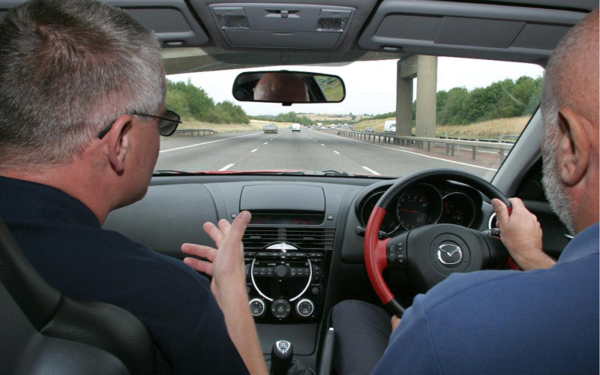
IF your SME employs more than five people, and if any of them ever drives on company business, then you’re responsible for making sure that they drive safely.
It’s broadly referred to as ‘Compliance’ and it means you have to be able to demonstrate that you meet your responsibilities under Occupational Road Risk, Health and Safety, Duty of Care and Corporate Manslaughter legislation. (See last month’s article on Corporate manslaughter for an outline of these responsibilities.)
Compliance with these is something that every business needs to recognise and act upon, to ensure they never get caught in the ‘non-compliance’ trap.
Did you know that employers are responsible for any employee driving on company business?
The risk of doing nothing
Doing nothing is not an option.
If the worst happens, and one of your ‘at work’ drivers is involved in an accident, you absolutely need to be able demonstrate that you have understood and acted upon your responsibilities – that you are ‘compliant’!
If you end up in a court and you can’t, I can assure you that a judge will bring you to your senses faster than you can say ‘check my bank account’. You’ll get a hefty fine and you’ll face remedial and publication orders – think of the hammering your company’s reputation will take!
Even if nothing goes wrong, the HSE or Police could come knocking on your office door expecting to see all driver records and the audit trails of training and assessments. “I’m sure I’ve got them here somewhere”, won’t get you off the hook.

It all comes down to the adoption of a Driving at Work policy for your business.
5 steps to Compliance when driving at work
If you employ drivers, you must, by law, have a company ‘Driving At Work’ policy.
If you haven’t got one, get one, and nominate a Director to be responsible for Health and Safety and employed driver compliance.
What follows takes you through the essential steps you need to take so that your company stays within the rules and regulations in a way that brings consistency and affordability into the equation.
Duty of Care – you must show a Duty of Care towards the drivers you employ, irrespective of whether they drive company owned vehicles or use their own – the so-called ‘grey fleet’.
This includes all drivers who drive on company business – even occasionally.
In practice you must demonstrate that you have taken reasonable steps to ensure that they are safe.

Audit Trail – you need to keep records for each and every employed driver.
Start with copies of drivers’ licences, and if they use their own vehicles rather than company vehicles you must keep records of the vehicles too. That includes service records, insurance documents, VED, and MOTs where relevant. It must all be close at hand should these ever be required by the Police and/or the Health and Safety Executive.
Driver Risk Assessment – of all employees who drive as part of their employment is the next step, and the easiest and cheapest way to get this done is online.
I suggest you use a provider who offers assessments and remedial training as part of an online package – so both components are available together. This closes a potential loophole where a company finds a specific driver has been assessed as ‘high risk’ and doesn’t act on that information straight away and get the driver trained – hence the need for assessment and training in one swoop.
Driver Training is the next stage of compliance, but it should only be needed if a driver is found to be at risk during the risk assessment.
Once again, online intervention training is cost effective and ensures total consistency across the board where every driver gets exactly the same training. Another bonus of this route is flexibility as it can be completed anywhere there is an internet connection!
It goes without saying, so I’ll say it anyway, that one-to-one training will be necessary if you are asking your drivers to undertake more specialist tasks.
It may also be necessary if the risk assessment shows a driver to be a particularly high risk – but in that case you might want to question whether he or she should be driving at work in the first place.

Annual Checks – think about the above system as an annual undertaking so that the safety culture becomes ingrained within the company. It also means that if an employee gets a few points on his or her licence you get to know about it, and can act accordingly.
Showing an exemplary Safety Audit Trail and Duty of Care is also a worthwhile goal in its own right.
Going the extra mile
You can go to the next level if you want your Duty of Care and Audit Trail to shout out that you have done everything requested of your small fleet and more.
This could be classroom seminars or workshops on advanced driving safety, or even better, looking into driver behaviour and attitude and their influences on road crashes along with decision making, driver choices and judgements.
Paul Ripley is the managing director of Driver Risk Dynamics.







